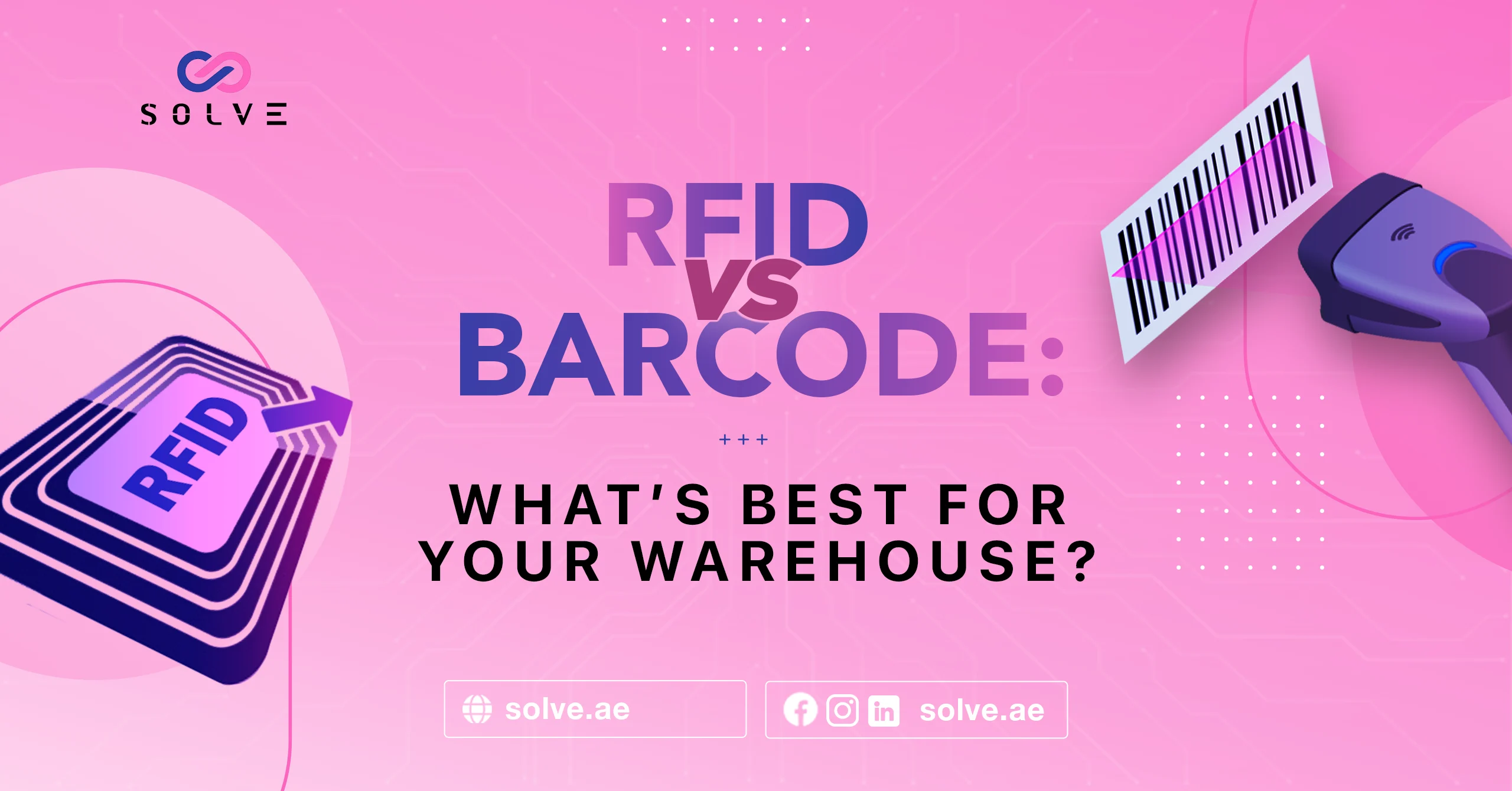- By Vanshika Choudhary
- March 25, 2025
Efficient management of warehouse inventory is the backbone of successful warehouse operations. Is your business also considering Radio Frequency Identification (RFID) adoptions or barcodes for tracking and managing inventories, as technology is developing? The two technologies streamlining operations differ massively in functionality, cost, and application. This blog was specifically developed to highlight the features of RFID and barcodes, including pros and cons, to help you make the necessary consideration of which technology fits your warehouse.
Introduction to the Basics
What are Barcodes?
Barcodes are optical representations of data, generally in the form of vertical black-and-white lines. They are probably the simplest, cheapest, and easiest technology to assimilate into current systems-the staples for decades in inventory management, especially for businesses that need simple tracking without complicated technology. Super-quick implementation with minimum training requirements for staff also characterizes them.
What is RFID?
Radio waves transmit the data within the tags to a reader. Scanning an RFID tag requires no direct, clear line of sight, and many items can be processed simultaneously. RFID technology is usually referred to in the context of systems that are mostly automated for advanced inventory tracking features. Tag-glued an RFID reader within the item and antenna successively form the triad of a system. Reading all tags at once makes it more productive for its applications.
Advantages of Barcodes
Barcodes have been around for quite some time so they have learned to understand all the answers regarding inventory management-simple and cost-effective. Here are some other major advantages:
Cost-effectiveness: It is a great advantage associated with barcoding technology. This factor helps small business ventures, which do not have much investment, to adopt any kind of label printing facility required along with scanner purchasing.
Ease of Integration: The barcode system enjoys a lot of popularity and compatibility with most existing software solutions, so it allows for very smooth implementation without extensive changes, modifications, and additional staff training.
Diversity: Barcoding can print virtually on any media, such as labels, packages, or even directly into products, providing flexibility for those applications across different industries.
Although these bodes promise advantages, they have Another drawback is wear on the barcode or physical damage hinders accurate scanning. check out our latest blog post on Why Influencer Marketing is Key for UAE E-Commerce Success
Advantages of RFID
RFID technology has advanced, making it worth spending the time and effort to invest in a modern warehouse.
Speed and Efficiency: RFID readers can process multiple tags simultaneously without being forced to be within the line of sight of the tag itself. This means less manual workload, better operational efficiency, and a faster counting process in receiving or shipping.
Automation: With RFID, a company can integrate inventory tracking with warehouse management systems (WMS) to automate activities. With this, human intervention will be at a minimum in stock monitoring, which means that it will cut down costs on labor while improving accuracy.
Accurate: Because it minimizes human error brought about by manual scanning, RFID promotion will give a precise count of inventory. This count will be valuable in making better decisions on stock management and avoiding stock-out or overstock situations.
Toughness: RFID tags are built to face extreme temperatures and exposure to moisture, and they can be reused many times. Therefore, they are suitable for challenging situations present in warehouses, where normal bar codes might fail.
Improved Data Storage: Compared to barcodes that retain small bits of information, RFID tags can keep detailed information for individual items, such as that concerning the manufacturing date, expiration date, or batch number, thereby improving traceability across the supply chain.
Of course, the inability of RFID implementation to achieve high upfront costs for some specialized equipment or tags will also sit well with interference by this technology because liquids or metals can interfere with passing radio signals.
Use Cases: When RFID Should Picked Over Barcodes
Barcodes Are Great For:
Barcodes are excellent for small warehouses or businesses that have small budgets and do not perform high-frequency scanning or bulk scan operations. They are typically manual processing environments, as barcoding systems are easy to set up without extensive technological upgrades. For example, retail stores will often implement barcodes for point-of-sale transactions since it is simple and can track sales quickly.
RFID is Ideal For:
On the contrary, large-scale warehouses that deal with high volumes of inventories and where speed is an important factor are ideal for RFID usage. Businesses that look to automate operations benefit from RFID’s ability to keep track of stock levels in real-time without human interference. Additionally, industries such as pharmaceuticals or food services that require strict compliance with regulations also view RFID as beneficial due to the heightened traceability it affords.
Factors to Consider When Choosing Between RFID and Barcodes
Choosing the right technology comes down to many factors:
Budget: Barcodes are the cheaper initial option; however, businesses must factor in the long-term costs of labor and error when deciding on a system that best fits their budgetary constraints.
Warehouse Size: Large warehouses can spare themselves considerable costs through RFID’s ability to scan multiple items at once, while smaller operations may feel that barcodes meet their needs
Operational Needs: If your business requirements are demanding high accuracy, speed, or automation owing to large volumes of goods processed in a day, this is where making an RFID choice can contribute greatly to overall efficiency.
Integration Requirements: Assess if integration into your existing systems will be an easy task; integration with current software will affect involved timelines and costs.
Environment: In extremely taxing environments for the warehouse, such as really low temperatures or high handling frequency of goods, the durability offered by RFID may be advantageous when contrasting it with barcodes, where the printed label may eventually erode.
Combination of Both Technologies
It may be of interest that most companies combine barcodes and RFID in their operations to improve efficiencies and minimize costs further. An example of this could be:
Barcodes are available for low-cost tracking functions, such as labeling products within a warehouse.
RFID may be “reserved” for high-value items and areas where automation requires fast identification.
This common-sense hybrid gives the ability to improve costs while still gaining advanced features where required and being more straightforward in less critical areas.
Conclusion
Both RFID and barcodes have their application in the inventory management of any warehouse, and understanding their respective advantages will allow you to make an educated decision track toward your operational requirements. Barcodes make life easy, whereas RFID is fast, precise, tough, and increasingly automated, a requirement with which modern businesses cannot compromise.
Barcodes remain a viable option for small warehouses or those just starting with inventory management systems, due to their simplicity and low initial investment requirements. On the other hand, contact us for investing more in RFID technology, which will drastically improve operational efficiency through high accuracy and reduced labor costs for any business fitting the abovementioned description.




